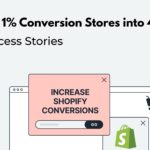- By Kiwi Commerce
- 17 May, 2025
- eCommerce Development, Marketing
SEO for E-Commerce: How to Rank Your Products Higher on Google
The Smart Way to Grow Your Online Store Organically
In today’s ultra-competitive eCommerce landscape, simply listing your products online isn’t enough. If your products aren’t ranking well on Google, you’re missing out on a huge share of potential traffic — and revenue.
At Kiwi Commerce, we specialise in helping brands grow their online visibility through intelligent, data-led SEO strategies. Whether you’re launching a new store or trying to boost sales for an established catalogue, this guide covers everything you need to know about SEO for eCommerce — and how to get your products ranking higher on Google.
Why SEO Matters in E-Commerce
Paid advertising is powerful — but it’s not sustainable alone. Organic search remains one of the highest-converting traffic channels for eCommerce. A strong SEO foundation ensures your products are discoverable by people who are actively searching for them, with the intent to buy.
Benefits of effective SEO for eCommerce:
- Increased visibility and consistent traffic
- Higher quality, purchase-ready visitors
- Reduced reliance on paid ads
- Better overall site performance and user experience
1. Start with Keyword Intent, Not Just Volume
It’s tempting to go after high-volume keywords, but for product SEO, intent is more important. Focus on what people are really looking for — and where they are in the buying journey.
Examples:
- “Black leather Chelsea boots UK” → Transactional, high intent
- “Best walking shoes for flat feet” → Informational, mid-funnel
- “Where to buy women’s trail shoes” → Navigational, decision-stage
Top tip: Use tools like Google Search Console, Ahrefs or Ubersuggest to identify long-tail, purchase-driven search terms your audience is actually using.
2. Optimise Product Pages for Search and Conversion
Each product page is a chance to rank and convert. Avoid using boilerplate content or manufacturer descriptions.
Key areas to optimise:
- Page titles: Include brand, product type, key features (e.g. “Men’s Waterproof Hiking Jacket – Lightweight & Breathable”)
- Meta descriptions: Sell the value, include a CTA
- H1 and subheadings: Use clear, keyword-rich headings
- Alt tags: Describe product images for SEO and accessibility
- Internal linking: Link to relevant categories, related products, or guides
Don’t forget to write unique product descriptions that highlight benefits, specs, and use cases. Add social proof (e.g. reviews, ratings) and FAQs to increase time on page and trust.
3. Use Structured Data (Schema Markup)
Adding product schema markup helps Google better understand your pages and display rich results, such as prices, availability, and reviews, directly in the search listings.
Benefits:
- Boosts click-through rates
- Helps you appear in product carousels
- Increases visibility on Google Shopping tabs
At Kiwi Commerce, we implement structured data for our clients using best-practice JSON-LD to ensure accuracy and scalability.
4. Category Pages = SEO Goldmines
Category (or collection) pages often drive more traffic than individual products, when optimised well.
What to include:
- A well-written intro paragraph above the product grid (with relevant keywords)
- Filters and facets that are crawlable (avoid JavaScript-only filtering)
- Internal links to top products and related categories
- Canonical tags to prevent duplicate content issues from sorting/filtering
Bonus tip: Add buyer guides or “best of” lists linked to category pages to build topical authority.
5. Technical SEO: Speed, Mobile, and Indexing
If your site’s slow or difficult to use, it won’t rank — no matter how good your content is.
Core areas to optimise:
- Page load speed: Compress images, use lazy loading, and leverage CDN
- Mobile experience: Ensure responsive design and clear CTAs
- Crawlability: Use clean URLS, avoid duplicate content, and fix broken links
- Indexing: Submit XML sitemaps and monitor Google Search Console regularly
At Kiwi Commerce, we conduct in-depth technical audits to ensure your eCommerce site is built on solid SEO foundations.
6. Don’t Ignore Blog Content
Blog content may seem secondary in eCommerce, but it’s an SEO powerhouse.
Content ideas:
- Product comparison posts (e.g. “Leather vs Faux Leather: Which is Best for Winter Boots?”)
- Style or buying guides (e.g. “How to Choose the Right Gym Trainers for Your Workout”)
- Answer search queries (e.g. “Are Waterproof Jackets Waterproof?”)
Strategy: Use blogs to internally link to category and product pages. This improves authority, user flow, and indexing.
7. Backlink Building for Online Stores
While backlinks are important for all websites, eCommerce brands need tailored strategies.
Effective link-building tactics:
- Collaborate with bloggers or influencers for product reviews
- Publish original data, sustainability efforts, or trend forecasts
- Reclaim mentions and broken links
- Get listed in shopping directories or industry roundups
We focus on building natural, brand-relevant links that increase your domain authority without risking penalties.
Final Thoughts from Kiwi Commerce
Ranking your products on Google isn’t about shortcuts — it’s about building a long-term strategy that puts your customers first. That means understanding what they’re searching for, creating content that matches that intent, and giving them a seamless experience from search to checkout.
At Kiwi Commerce, we help ambitious brands turn organic traffic into measurable growth. From technical SEO audits to content strategy and performance monitoring, we’re your partner in scalable eCommerce success.
Want your products to rank higher — and sell more?
Let’s talk.
We’ll show you how to optimise your store for better rankings, more traffic, and higher conversions.
👉 Contact the team at Kiwi Commerce



